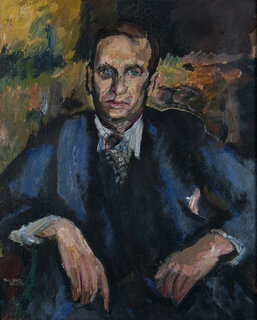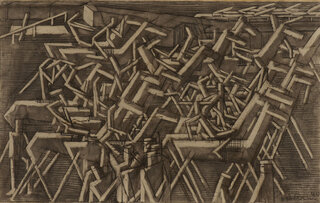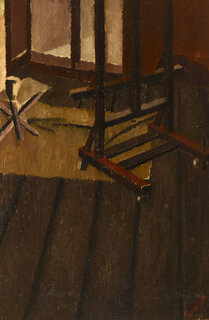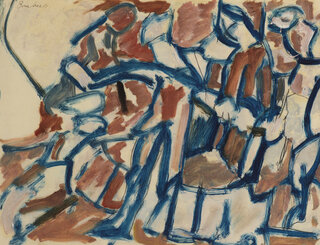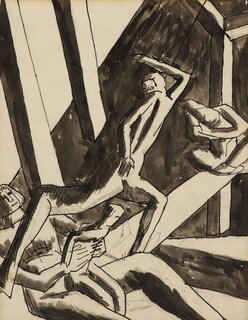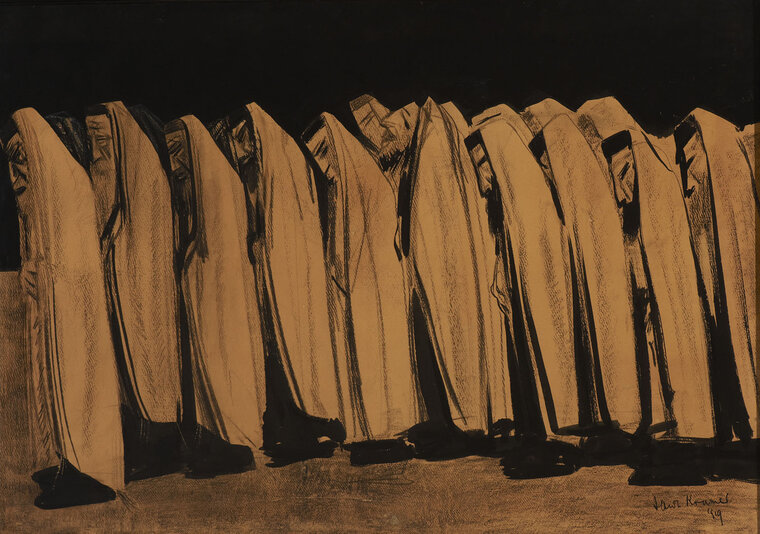
© The William Roberts Society, London
The Day of Atonement is a study for a larger painting regarded as one of the most important in the Anglo-Jewish canon, gifted to Leeds Art Gallery by the local Jewish community in 1920 to mark Kramer’s departure for London. Drawing on contemporary influences, including Cubism, Futurism and Vorticism, Kramer treated the subject of devotion during Yom Kippur, the most solemn day in the Jewish religious calendar, with a new modernist vocabulary.
After leaving the Slade, Kramer had striven to achieve a spiritual quality in his art without jettisoning his modernist credentials and in 1918 a design for a woodcut, entitled The Day of Atonement, appeared in the sole issue of the literary review New Paths, co-edited by Michael Sadleir, son of his patron. Here the procession was simplified to six angular figures; those at the front tilting their mask-like features upwards in poses that anticipate the painting. The text described Kramer as: ‘far more essentially Hebraic in his outlook than Gertler, whose Jewish extraction seems over emphasised. Kramer is a grim bitter realist […] Kramer obtains the effect of Primitivism through a ruthless elimination of all that is unessential’.
